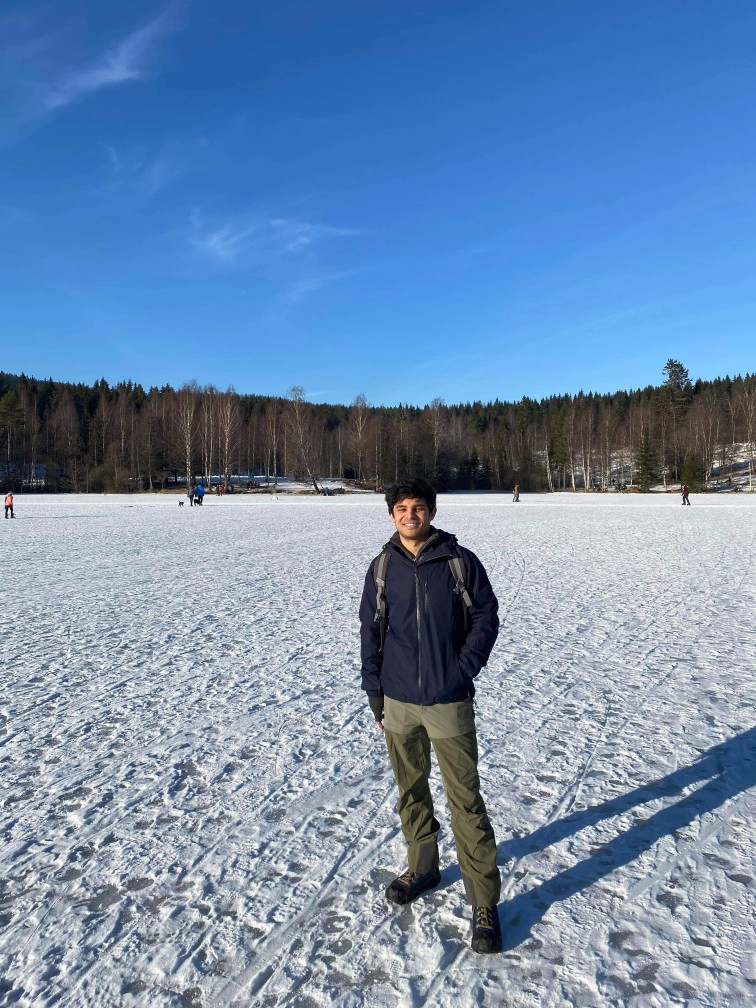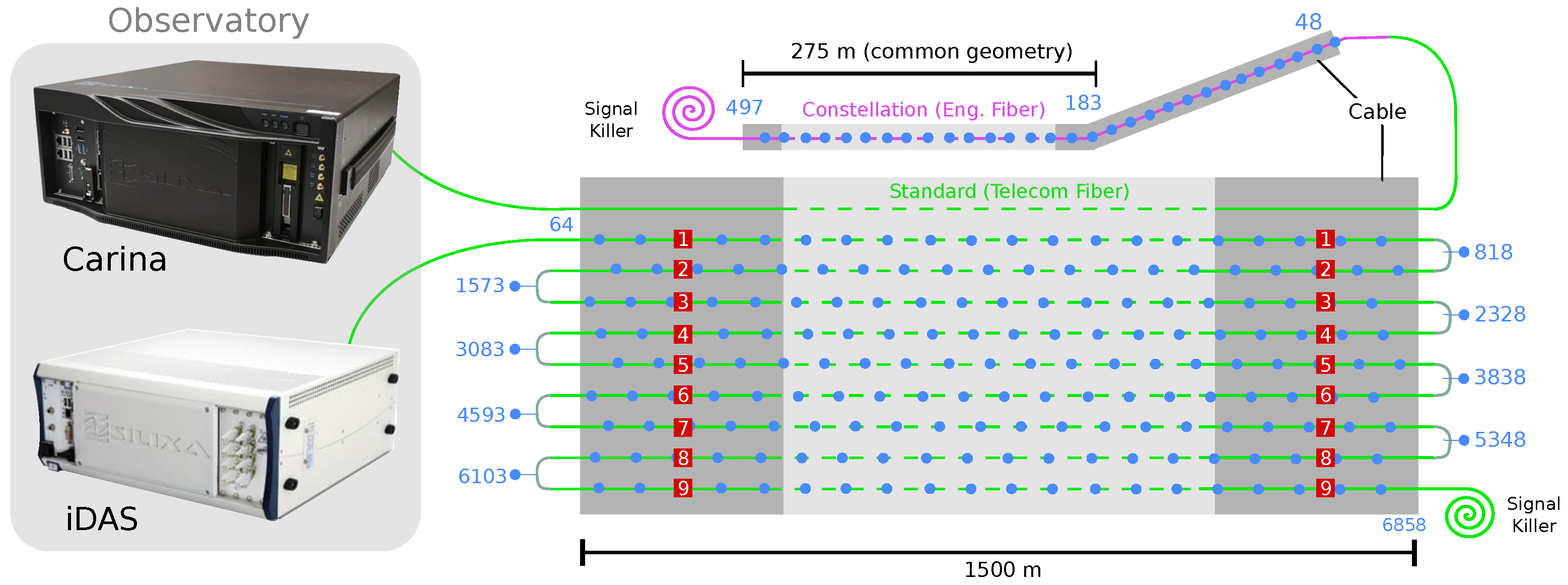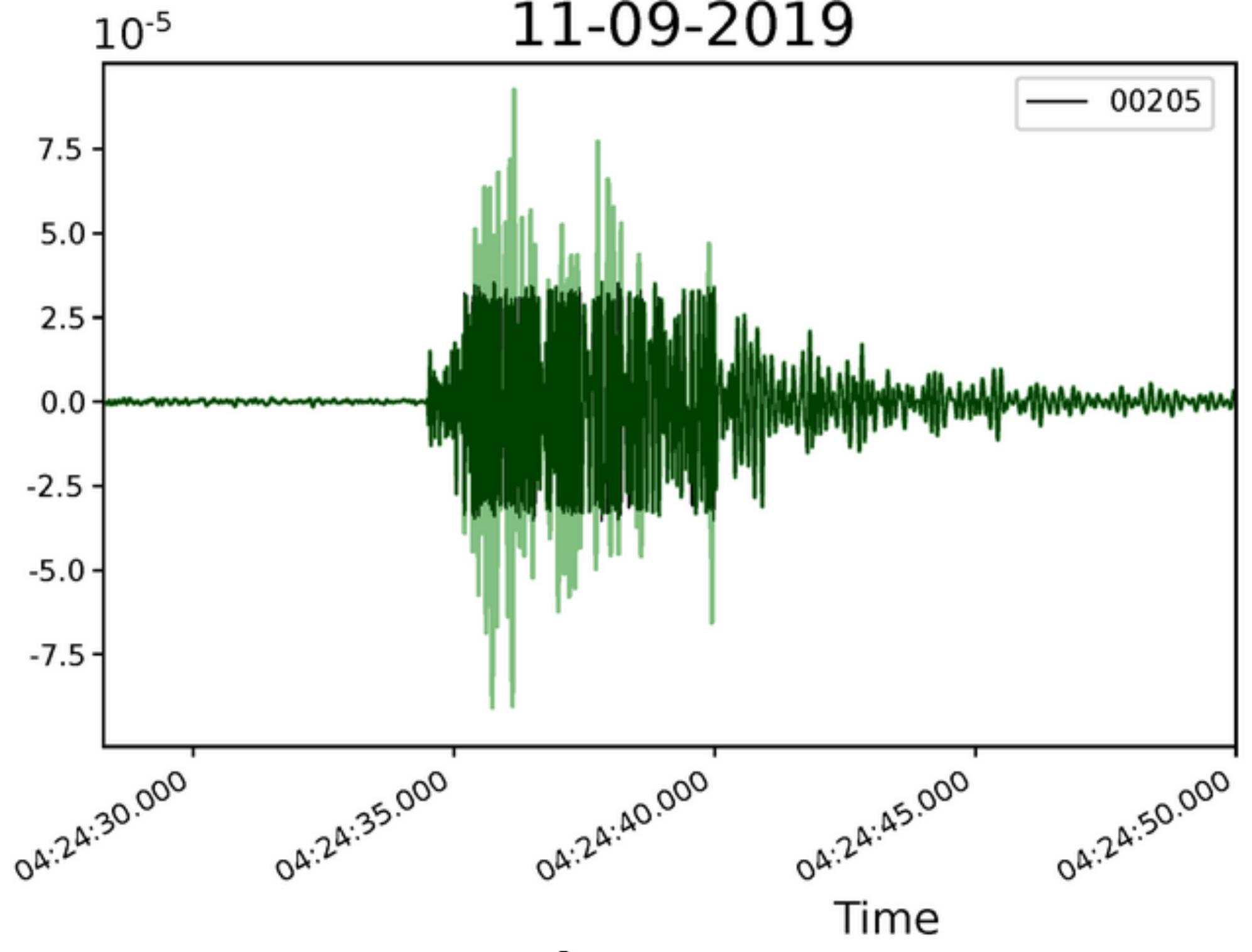SPIN ESR 4.4: Distributed Acoustic Sensing and Volcano-seismology
Name: Sergio Diaz-Meza 
Institution: GFZ Helmholtz Centre Potsdam
Email: sergioad@gfz-potsdam.de
Introduction
My story begins at the University of The Andes (Colombia), where I studied my bachelor in Geosciences. I was interested in Structural Geology, and suddenly I felt so much in love with Seismology, that I worked in solving focal mechanisms from seismic nests in subduction zones as my thesis. I then pursued a master in Geophysics & Geodynamics at the University of Oslo (Norway). There I worked on developing an automatic routine for detection and location of volcanic tremor signals using 2-years continuous data from a seismic network in East Java island (Indonesia).
Currently I’m now part of the SPIN network, working as a PhD candidate at the GFZ-Potsdam (Germany). Here my task is to understand the complex seismo-acoustic wavefield interactions at the vicinity of Mt. Etna volcano (Sicily), specifically focusing on non-linear elastic ground response triggered by volcanic explosions. For this purpose I use data from a deployed multi-instrumental network: broad-band seismic stations, infrasound sensors, and fiber optic Distributed Dynamic Strain Sensing (a.k.a DAS).
Publication
Diaz-Meza, S., Jousset, P., Currenti, G., Wollin, C., Krawczyk, C., Clarke, A., & Chalari, A. (2023). On the Comparison of Records from Standard and Engineered Fiber Optic Cables at Etna Volcano (Italy). Sensors, 23(7), 3735. https://doi.org/10.3390/s23073735
Diaz-Meza, S., Jousset, P., Currenti, G., David, A., Clarke, A., Stork, A., Chalari, A., and Krawzcyk, C.: Towards exploiting the advantages of a Standard telecom multi-fibre cable for volcano monitoring: an example from Mt. Etna, EGU General Assembly 2023, Vienna, Austria, 24–28 Apr 2023, EGU23-15265, https://doi.org/10.5194/egusphere-egu23-15265, 2023.
Andres F. Rodriguez-Corcho, Yamirka Rojas-Agramonte, Johana A. Barrera-Gonzalez, Maria P. Marroquin-Gomez, Sarah Bonilla-Correa, David Izquierdo-Camacho, Sofia M. Delgado-Balaguera, David Cartwright-Buitrago, Maria D. Muñoz-Granados, William G. Carantón-Mateus, Alejandro Corrales-García, Andrés F. Laverde-Martinez, Aura Cuervo-Gómez, Marco A. Rodriguez-Ruiz, Juan P. Marin-Jaramillo, Nicole Salazar-Cuellar, Laura C. Esquivel-Arenales, Maria E. Daroca, A. Sofía Carvajal, Ana M. Perea-Pescador, Juan D. Solano-Acosta, Sergio Diaz, Alejandro Guillen, German Bayona, Agustín Cardona-Molina, Bruce Eglington & Camilo Montes (2022) The Colombian geochronological database (CGD), International Geology Review, 64:12, 1635-1669, DOI: 10.1080/00206814.2021.1954556
Research progress
We found evidence of possible non-linear elastic relation by associating the peak-to-peak (pp) pressure rate amplitudes from volcanic explosions (infrasound) with the associated pp amplitude of strain-rate signals in the ground from fiber optic sensing (Fig. 1). Despite fiber optics is an emergent sensing technique in seismology, it comes with signal artifacts which are imperative to understand so data can be processed correctly. Therefore me developed tools to assess features in fiber optic signals and experiments such as comparing 2 different types of fibers (Fig. 2) to understand better the instrumentation. This allowed us to assess our data correctly and overcome limitations of the initial acquisition parameters. As an example, we now able to restore original strain-rate values from saturated signals (Fig. 3) and use them for further analysis.
 Fig 1. peak-to-peak amplitude relations between pressure rate from volcanic explosions, and strain-rate triggered signals on the ground at one channel of the fiber optic.
Fig 1. peak-to-peak amplitude relations between pressure rate from volcanic explosions, and strain-rate triggered signals on the ground at one channel of the fiber optic.
 Fig 2. Experiment setup. Two different types of fibers (standard and engineered fibers) were interrogated with different units for data comparison. We also explored the advantages of stacking strain-rate data by interrogating interconnected fibers within the same cable. From Diaz-Meza et al. (2023).
Fig 2. Experiment setup. Two different types of fibers (standard and engineered fibers) were interrogated with different units for data comparison. We also explored the advantages of stacking strain-rate data by interrogating interconnected fibers within the same cable. From Diaz-Meza et al. (2023).
 Fig 3. Strain-rate saturated signal from a fiber optic channel (black), and the restored strain-rate signal after correction (green). This allow us to overcome the limitations of dynamic range in fiber optic sensing, and have access to valuable data that is usually neglected for signal processing. From Diaz-Meza et al. (2023).
Fig 3. Strain-rate saturated signal from a fiber optic channel (black), and the restored strain-rate signal after correction (green). This allow us to overcome the limitations of dynamic range in fiber optic sensing, and have access to valuable data that is usually neglected for signal processing. From Diaz-Meza et al. (2023).